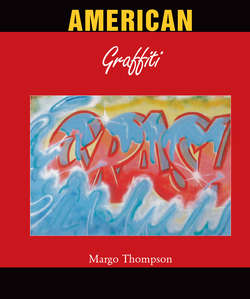Читать книгу American Graffiti - Margo Thompson - Страница 11
На сайте Литреса книга снята с продажи.
Subway Writers
Evaluating Quality
ОглавлениеPhotographer Martha Cooper, who documented subway pieces and emerging hip-hop culture in the 1970s and 1980s, described the way writers evaluated their pieces:
Writers had developed what amounted to their own gallery culture on the trains. The trains were the gallery and the writers were their own critics. Their culture in many ways mimicked the art world, but they had their own art world. The kids were their own harshest critics. They could go on and on about why a piece didn’t work aesthetically and which colors were in the piece…[57]
DONDI, who made himself available to critique other writers’ designs, recommended taking snapshots to learn from and improve upon one’s efforts.[58] BLADE, too, relied on photographs to document his and other writers’ pieces. Because of the MTA’s campaign to clean graffiti off trains, writers could not count on their pieces lasting for long – sometimes cars were washed even before they left the yard. As much as possible, however, writers judged each others’ efforts after viewing them first-hand. They measured their praise, even when they discussed writers whom they admired, as in this dialogue between DONDI and ZEPHYR about LEE:
[DONDI] When I first saw LEE whole-cars I thought they were really great, until I caught one in the Two Yard. They were great, but I thought they were a lot better until I actually saw one up close.
[ZEPHYR] They’re painted real fast.
[DONDI] Yeah, there were drips and everything and I’m thinking, “Well, this is, this is okay, it’s good, but…”
[ZEPHYR] But when you saw them up close they weren’t as impressive as when you saw them…
[DONDI] Right, right.
[ZEPHYR] Which is the way he paints.
[DONDI] Of course, this led me to believe that he was doing these things out of a bomber mentality. And he wasn’t trying to become a muralist of the graffiti scene, which eventually happened because he covered so much space.[59]
FUTURA 2000, Break, 1980. Aerosol paint on New York subway car. Destroyed. Photo by Martha Cooper.
CRASH, Untitled, date unknown. Aerosol paint on subway car. New York.
BLADE, Whole car tag, 1980. Aerosol paint on subway car.
Neatness counted: no matter how capable a writer was stylistically, drips detracted from his reputation.
Qualitative evaluation was closely linked to documentation of the history of writing. BLADE maintained meticulous records of his tags, and kept track of the innovations that he and others developed. RAMMELLZEE, as already mentioned, proposed that writing had roots in medieval manuscripts and the monks who lettered them, and he inspired others to elaborate his theory. NOC 167 helped young writers define their styles, and created the whole-car piece that represented the motivating notion of ‘Style Wars’ – the competition among writers to create distinctive forms of lettering and broadcast their innovations city-wide on the sides of subway cars. All three understood subway writing as an historical phenomenon independent of fine art, with a past to be mined and a future to be shaped.
57
Miller, 131.
58
Cooper and Chalfant, 32.
59
Witten and White, 111.
